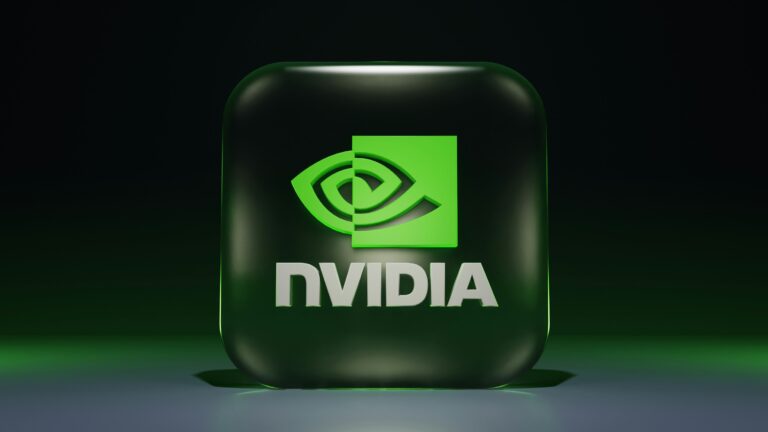Artificial Intelligence (AI) has evolved at a rapid pace in recent years, and companies like Nvidia have been at the forefront of this technological revolution. Their hardware, particularly GPUs, has powered a vast range of applications from gaming to deep learning, making Nvidia a household name in the AI and tech industries. However, new entrants into the AI space are constantly emerging, with DeepSeek being one such player gaining attention. But, can DeepSeek’s AI model truly challenge the dominance of established giants like Nvidia? In this article, we’ll dive deep into the ongoing analysis and discussions around this topic.
What is DeepSeek’s AI Model?
DeepSeek’s AI model represents a significant leap forward in the evolution of artificial intelligence, leveraging cutting-edge advancements in neural networks and machine learning algorithms. The company’s focus is on enhancing the computational power required to drive sophisticated AI applications, positioning itself as a promising contender in the highly competitive AI market. DeepSeek aims to provide solutions that can cater to a wide range of industries, with potential applications spanning from natural language processing to predictive analytics, and even advanced robotics. The versatility of DeepSeek’s model is one of its key strengths, as it has the potential to improve efficiency and performance across diverse sectors.
Despite its promise, DeepSeek’s AI model has not yet proven to be a substantial threat to the established dominance of Nvidia, a company that has long reigned in the AI hardware space. Nvidia’s powerful GPUs and deep software ecosystem have allowed it to secure a dominant position, making it a go-to choice for many AI-driven applications. Analysts caution that while DeepSeek’s AI model shows remarkable potential, it may not yet be advanced enough or capable of matching Nvidia’s scale, especially when it comes to high-performance computing needs.
One of the standout features of DeepSeek’s model is its emphasis on optimizing computational efficiency, enabling faster and more cost-effective processing. This is a crucial factor in AI development, where the computational demands can be incredibly high. DeepSeek’s approach to AI focuses not just on the quality of the algorithms, but also on the resource utilization, aiming to reduce the energy and hardware costs typically associated with AI processing. This could make DeepSeek a viable option for businesses looking for affordable yet high-performing AI solutions.
However, despite these advancements, DeepSeek’s lack of an extensive hardware offering and limited software ecosystem are significant barriers in its bid to rival Nvidia. The need for specialized hardware to handle the complexities of AI workloads remains an important consideration, and Nvidia has a considerable head start in this area. While DeepSeek’s adaptability and affordability offer promising benefits, its model still requires more development to truly challenge Nvidia’s entrenched position as the leader in AI hardware.
Why is Nvidia So Dominant in the AI Landscape?
| Aspect | Description | Key Benefit | Examples | Impact on AI Landscape |
| Specialized Hardware for AI | Nvidia has built a reputation by offering specialized hardware, particularly its GPUs, designed for the parallel processing tasks that are crucial in AI and deep learning applications. | Nvidia’s GPUs are optimized for handling complex computations required in AI, making them the go-to solution for AI research and development. | Tesla’s self-driving cars, Healthcare AI applications | Nvidia’s GPUs have become the gold standard for AI research, providing unrivaled processing power. |
| Software Ecosystem | Nvidia has developed an extensive software ecosystem, including platforms like CUDA, cuDNN, and TensorRT, that complement its hardware and make AI model development more efficient. | These tools enable AI developers to easily integrate hardware with software, significantly enhancing performance and ease of use. | Tesla’s Autopilot software, Deep Learning models | By building a cohesive software ecosystem, Nvidia makes it easier for developers to train AI models, leading to broader adoption of their hardware. |
| Market Penetration | Nvidia’s GPUs are widely used across various industries such as autonomous driving, healthcare, entertainment, and more. Its hardware powers the backbone of nearly every major AI initiative. | Their GPUs have become essential for organizations across different sectors, creating a large and consistent demand for Nvidia products. | Google’s AI services, Amazon’s AWS, medical research | Nvidia’s dominance in multiple industries solidifies its position as a key AI hardware provider, making it a go-to choice for enterprises. |
| Collaboration with Leading Tech Companies | Nvidia has forged strong strategic partnerships with some of the world’s leading tech companies, ensuring continued growth and innovation within the AI space. | These collaborations ensure Nvidia’s products are at the forefront of AI-driven solutions, keeping them ahead of potential competitors. | Google, Microsoft, Tesla, Amazon | Partnerships with tech giants guarantee Nvidia access to cutting-edge AI projects and innovations, further cementing its leadership in AI. |
What Does DeepSeek Bring to the Table?
- DeepSeek’s AI model is designed to optimize resource management in AI computations. By utilizing advanced algorithms, it aims to reduce the computational resources required for training and inference processes. This reduction in resource usage could lead to significant cost savings for organizations, making it an attractive option for companies looking to minimize their operational expenses.
- Unlike traditional AI models that require specialized hardware for optimal performance, DeepSeek’s model is highly adaptable to various systems. This flexibility allows it to cater to a broader range of customers, including those who may not be able to afford Nvidia’s high-end GPUs. DeepSeek’s approach could potentially open new opportunities in sectors with limited access to advanced AI hardware.
- Another key feature of DeepSeek’s AI model is its focus on innovation in data processing. DeepSeek aims to optimize the data processing speed, ensuring faster throughput with lower latency. This capability could be particularly transformative for industries like real-time analytics, autonomous systems, and other fields that require swift decision-making and minimal delays.
- DeepSeek’s AI model is also known for being more affordable compared to Nvidia’s premium offerings. While Nvidia’s products are typically priced for high-end, enterprise-level customers, DeepSeek’s solutions come at a more competitive price point. This affordability makes DeepSeek an appealing option for startups, small businesses, or companies with budget constraints that still want to leverage the power of AI.
Challenges DeepSeek Faces in Competing with Nvidia
Despite the promising features of DeepSeek’s AI model, it faces significant challenges that make it unlikely to surpass Nvidia’s dominance in the AI market in the immediate future.
One of the primary obstacles is DeepSeek’s limited hardware offerings. Nvidia has built a comprehensive and highly specialized hardware lineup, including its flagship A100 Tensor Core GPUs, which deliver unmatched performance for AI and deep learning tasks. These high-performance GPUs are optimized for demanding computations and have become the industry standard for AI research. In contrast, DeepSeek is still in the early stages of developing its own hardware solutions. Without a strong and established hardware lineup, DeepSeek is limited in its ability to serve industries that require cutting-edge, specialized AI hardware for tasks such as real-time data processing and autonomous systems.
Another challenge for DeepSeek is its lack of an established software ecosystem. Nvidia has invested years into developing powerful software platforms such as CUDA, cuDNN, and TensorRT. These platforms have become integral to AI development, providing developers with the tools needed to leverage Nvidia’s hardware effectively. DeepSeek, however, has not yet built a software ecosystem of comparable scale and sophistication. Without robust and widely adopted software solutions, DeepSeek faces a significant barrier in attracting AI developers who rely on Nvidia’s ecosystem for building and training AI models. The ease of use, compatibility, and the strong developer community around Nvidia’s software make it difficult for newcomers like DeepSeek to establish a similar presence.
In addition to these technical hurdles, DeepSeek must contend with Nvidia’s powerful network effects. Nvidia’s success has created a massive network of customers, partners, and developers who rely on its hardware and software products. This network effect reinforces Nvidia’s dominance, making it difficult for new entrants to replicate. DeepSeek faces an uphill battle in building a comparable network from scratch, as the AI development community is deeply entrenched in Nvidia’s ecosystem. The sheer volume of users, along with the integration of Nvidia’s products into many AI projects, means that it will take a long time for DeepSeek to gain significant traction in the market.
Key Differences Between Nvidia and DeepSeek
| Aspect | Nvidia | DeepSeek |
| Hardware | High-performance GPUs and specialized chips | Limited hardware offerings |
| Software | CUDA, cuDNN, TensorRT, deep software ecosystem | Limited software ecosystem |
| Cost | Premium pricing for high-end hardware | More affordable solutions |
| Market Penetration | Established leader with massive customer base | New player with limited market reach |
| R&D Investment | Billions in R&D for continuous innovation | Smaller R&D budget in comparison |
Where Does DeepSeek Stand in Relation to Nvidia?
- DeepSeek’s AI model offers promising solutions but is not yet on par with Nvidia in several key areas.
- DeepSeek’s lower-cost, adaptable AI solutions may appeal to smaller companies and niche markets.
- Nvidia’s dominance in the high-end AI hardware space remains unmatched.
- DeepSeek’s solutions could benefit businesses with budget constraints or those looking for cost-effective alternatives to Nvidia’s high-end GPUs.
- DeepSeek is unlikely to challenge Nvidia’s overall market position in the near future.
- Nvidia’s superior performance, software ecosystem, and industry adoption give it a strong competitive edge.
- DeepSeek may become a viable alternative for specific industries or businesses but has a considerable gap to close before competing on a larger scale with Nvidia.
The Future of DeepSeek in the AI Market
While DeepSeek may not currently pose a significant threat to Nvidia, the AI market is still evolving at a rapid pace. The continuous advancements in technology, coupled with growing demand for AI solutions, mean that there is ample opportunity for new players like DeepSeek to carve out a niche for themselves. DeepSeek’s focus on innovation, particularly in areas like resource management, data processing, and cost-effectiveness, could position it as a strong competitor in the AI market over time. By providing more affordable and adaptable AI solutions, DeepSeek could cater to smaller businesses and industries looking for cost-efficient alternatives to Nvidia’s high-end hardware.
However, to truly rival Nvidia and challenge its dominance, DeepSeek will need to address several key challenges. One of the most significant hurdles is hardware development. Nvidia has invested heavily in creating specialized GPUs that are optimized for AI and deep learning applications. DeepSeek, in contrast, has yet to develop a comparable hardware lineup, which limits its ability to compete in sectors requiring high-performance computing. To compete on the same level, DeepSeek would need to significantly ramp up its hardware development efforts and offer products that can match or surpass the capabilities of Nvidia’s GPUs.
Another crucial area for DeepSeek to focus on is building a comprehensive software ecosystem. Nvidia’s software platforms, such as CUDA and cuDNN, are essential tools for developers and have become integral to the AI development process. DeepSeek has yet to establish a similar software infrastructure, and without it, the company risks falling behind in attracting developers who rely on the stability and efficiency of established tools. If DeepSeek can develop a competitive software ecosystem that is compatible with its hardware and optimized for AI applications, it could gain an edge in the market and increase its appeal to a broader range of customers.
It’s also worth noting that the AI industry is still in its infancy, with new advancements and innovations being made every day. As technology progresses, the landscape of the AI market will continue to evolve. While Nvidia is currently a dominant force, the rapid pace of change in the industry means that new players, like DeepSeek, could potentially disrupt the market in the future. With ongoing advancements in AI research, the competition could intensify, benefiting consumers by driving down costs and fostering innovation across the industry. The future of DeepSeek in the AI market will largely depend on its ability to adapt, innovate, and tackle the challenges ahead.












